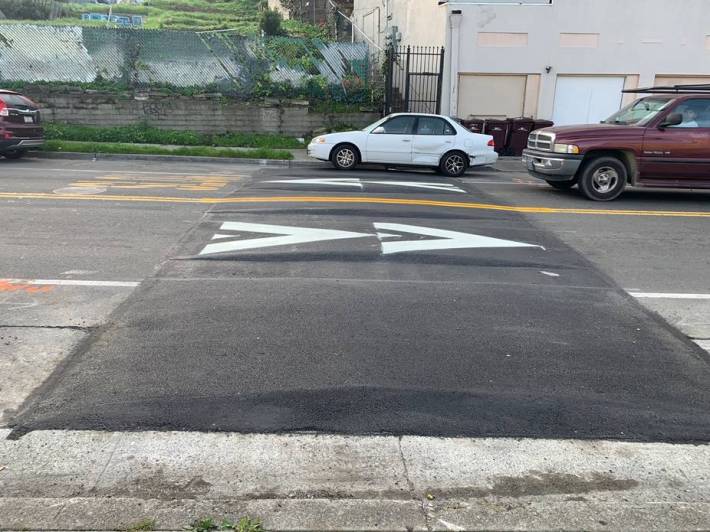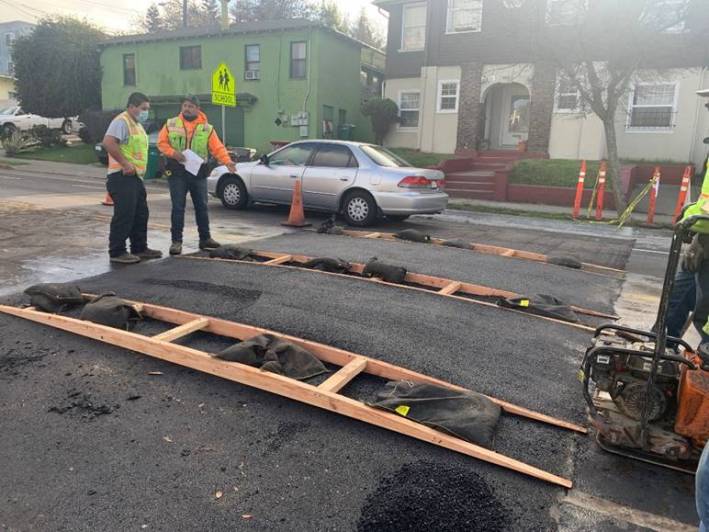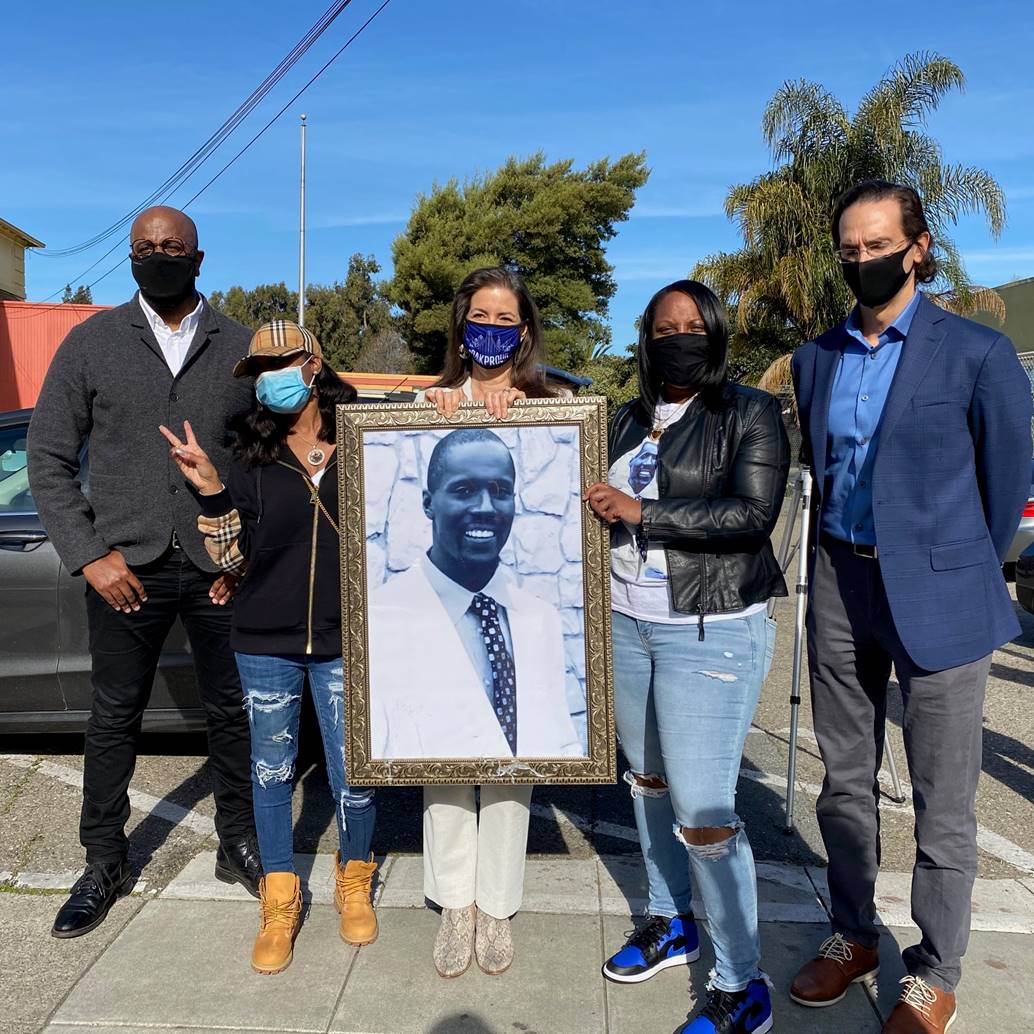Note: GJEL Accident Attorneys regularly sponsors coverage on Streetsblog San Francisco and Streetsblog California. Unless noted in the story, GJEL Accident Attorneys is not consulted for the content or editorial direction of the sponsored content.
Deontae Lamar Bush, 34, was riding his bike on Galindo when he was killed by the driver of a van where it intersects with 35th Avenue. That 2018 crash galvanized neighbors who had long complained about speeding and an unsafe road design that lead to multiple crashes over the years. Oakland's Department of Transportation responded with a round of 'rapid response' improvements that included refreshed crosswalk markings to increase visibility and more curb 'daylighting' at corners to improve viability.
This morning the City of Oakland announced the completion of a second round of improvements, this time in asphalt and concrete. “Oaklanders demand and deserve a local government that puts their safety first, and today marks a major step forward delivering streets that are safer to walk, ride, or drive,” said Oakland Mayor Libby Schaaf. "We know these changes have come too late for Deontae Bush and so many others.”
"Words can’t explain how it feels knowing my brother’s death can help and will help other people,” said Cherie McCullum, Bush’s sister. “We are forever thankful."
The new improvements, installed on 35th between E. 18th Street and Mangels Avenue, include:
- Seven speed cushions to slow traffic while still accommodating emergency and transit vehicles
- Three Pedestrian Hybrid Beacons to allow people walking to safely cross the street by slowing and stopping traffic
- Seven Flashing Beacons to alert people driving to people walking in the crosswalk
- One upgraded traffic signal with new left turn phases at 35th Avenue and Foothill to improve safety when turning

According to a statement from the city, 35th Avenue is a 'high injury corridor' and Bush's death was "...just the latest in a tragic history of injuries and deaths along the corridor; data have helped identify a high-injury corridor network the City is now using to prioritize major safety investments – just six percent of streets that accounts for more than 60 percent of severe and fatal traffic crashes. OakDOT’s work to address these corridors is guided by information identifying the areas known to face the highest rates of injury crashes, where vulnerable communities such as youth and families in schools are located, and where Oakland’s most historically underserved communities live."

The $3 million project was primarily paid for with federal Highway Safety Improvement Program (HSIP) funding from Caltrans, matched by Oakland’s Measure KK. The City is planning to release a comprehensive traffic study sometime this spring to look at other corridors in need of speed tables and similar treatments to what was installed on 35th. This time, one hopes, without another traffic death to give it urgency.
"He was a huge loss for our family, so to see great things happening for our community, and a lot of improvements & awareness ," said McCullum. "I cried tears of joy hearing about the improvements. Deontae was a great person and I know he would be so happy that his life became a message.”





